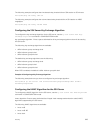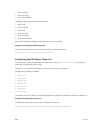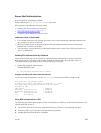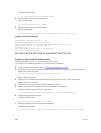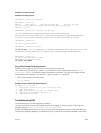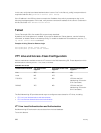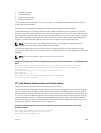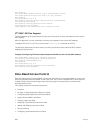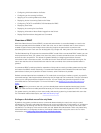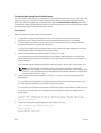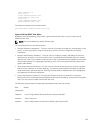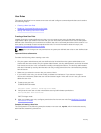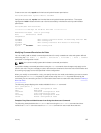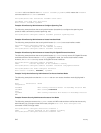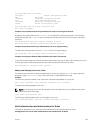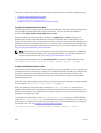
• Configuring AAA Authorization for Roles
• Configuring an Accounting for Roles
• Applying an Accounting Method to a Role
• Displaying Active Accounting Sessions for Roles
• Configuring TACACS+ and RADIUS VSA Attributes for RBAC
• Displaying User Roles
• Displaying Accounting for User Roles
• Displaying Information About Roles Logged into the Switch
• Display Role Permissions Assigned to a Command
Overview of RBAC
With Role-Based Access Control (RBAC), access and authorization is controlled based on a user’s role.
Users are granted permissions based on their user roles, not on their individual user ID. User roles are
created for job functions and through those roles they acquire the permissions to perform their
associated job function. Each user can be assigned only a single role. Many users can have the same role.
The Dell Networking OS supports the constrained RBAC model. With a constrained RBAC model, you can
inherit permissions when you create a new user role, restrict or add commands a user can enter and the
actions the user can perform. This allows for greater flexibility in assigning permissions for each
command to each role and as a result, it is easier and much more efficient to administer user rights. If a
user’s role matches one of the allowed user roles for that command, then command authorization is
granted.
A constrained RBAC model provides for separation of duty and as a result, provides greater security than
the hierarchical RBAC model. Essentially, a constrained model puts some limitations around each role’s
permissions to allow you to partition of tasks. However, some inheritance is possible.
Default command permissions are based on CLI mode (such as configure, interface, router), any specific
command settings, and the permissions allowed by the privilege and role commands. The role command
allows you to change permissions based on the role. You can modify the permissions specific to that
command and/or command option. For more information, see Modifying Command Permissions for
Roles .
NOTE: When you enter a user role, you have already been authenticated and authorized. You do
not need to enter an enable password because you will be automatically placed in EXEC Priv mode.
For greater security, the ability to view event, audit, and security system log is associated with user roles.
For information about these topics, see Audit and Security Logs.
Privilege-or-Role Mode versus Role-only Mode
By default, the system provides access to commands determined by the user’s role or by the user’s
privilege level. The user’s role takes precedence over a user’s privilege level. If the system is in “privilege or
role” mode, then all existing user IDs can continue to access the switch even if they do not have a user
role defined. To change to more secure mode, use role-based AAA authorization. When role-based only
AAA authorization is configured, access to commands is determined only by the user’s role. For more
information, see Configuring Role-based Only AAA Authorization.
Security
811



